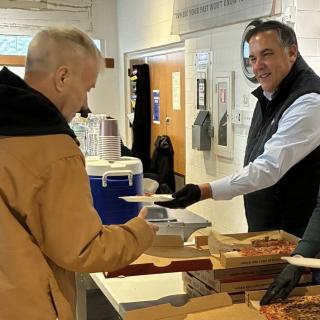These days, some mighty big players are talking about cannabis, extracts and scheduling: U.S. Food and Drug Administration (FDA), Department of Health and Human Services (HHS) and the World Health Organization (WHO).
As background, all marijuana, aka cannabis, is illegal in the U.S. according to the feds. It’s position as “Schedule I” in the Controlled Substances Act (CSA) codifies this, as do international treaties like one negotiated in 1971. This rusty political machine meanders change through multiple agencies, arriving at a website called regulations.gov where mere interested persons can submit comments for the WHO to consider. The question is, should or should not cannabis’ classification match modern reality?
That’s essentially what is being addressed by the FDA via the HHS in response to the WHO. With this information, the WHO will convene a special session to review the following five substances: Cannabis plant and cannabis resin, extracts and tinctures of cannabis, THC, CBD, and stereoisomers of THC. The following text was submitted online to the FDA:
The plant. Cannabis is complex. The plant is comprised of 450 chemicals, including 78 largely un-researched, but arguably therapeutic cannabinoids, in addition to delta-9-tetrahydrocannabinol (THC) and cannabidiol (CBD). The FDA tends to view medicinal value through the limited lens of a single chemical entity, failing so far to approve any product derived from a botanical. Well, it should. Cannabinoids work synergistically together to create an “entourage effect” in which the whole is greater than the sum of its parts.
The endocannabinoid system. Both THC and CBD were newborn discoveries when the 1971 Convention on Psychotropic Substances was codified. Then, neither scientists nor politicians understood the human body’s close relationship with the cannabis plant. During the 1990s, researchers uncovered internal “cannabinoid receptors” and cannabinoids such as Anandamide. They called this configuration the “endocannabinoid system,” essentially cannabis within. What is its purpose? The stability, harmony and homeostasis of the body. This is why cannabinoids, whether internal or external, modulate motor coordination, memory processing, pain, and inflammation, and have anxiolytic effects. What happens in the absence of cannabinoids? An endocannabinoid deficiency syndrome develops.
Research. The HHS is charged with undertaking a scientific and medical evaluation of the five substances. Dare we say, finally? Marijuana’s placement in the CSA’s most restrictive Schedule I obstructed cannabis research in the United States for almost 50 years. Most of the major advancements have, by necessity, occurred elsewhere. Science has only scratched the surface of the treasure trove that embodies the medicinal benefits of cannabis and cannabinoids. In 2004, a search of “cannabinoid” in Pubmed.gov from the National Library of Medicine produced 5,900 citations; in 2010, that number was 12,000. Now, that same search finds 23,365 results. Cannabinoid medicine is clearly a science whose time has come.
Public policy. The CSA uses three criteria to determine classification under Schedule I: high potential for abuse, no currently accepted medical value in the U.S. and lack of accepted safety under medical supervision. When drafted, cannabis’ placement in the CSA was deemed provisional by HHS pending a review, which was completed with the 1972 Shafer Commission report. Not surprisingly, the Nixon administration ignored the report because it favored decriminalization. That sinister move had devastating consequences. Over the following 45 years, arrest and incarceration rates in the U.S. exploded. More than 20 million Americans have been arrested for some type of marijuana violation, particularly people of color who comprise almost 60% of those incarcerated for drug offenses. America’s prison population now tops 2.1 million, the largest in the world, and spending to prosecute the drug war exceeds $50 billion. Clearly, HHS considerations go far beyond scientific and medical evaluations.
But strictly concerning Schedule 1.
- High potential for abuse, no. An estimated 35 million Americans use cannabis monthly. Considering the endocannabinoid system and its deficiency syndrome, perhaps otherwise law abiding citizens are augmenting their systems and mediating a deficiency, instead of abusing CB1 receptors. The lexicon of the FDA, HHS and WHO must change.
- No accepted medical value, incorrect. Because of federal intransience, 45 states have legalized medical marijuana, whether whole plant or CBD only. Each of these laws is predicated on medical expertise.
- Lack of safety, untrue. In 1988, DEA Administrative Law Judge, Francis Young ruled, “Marijuana in its natural form is one of the safest therapeutically active substances known to man. By any measure of rational analysis marijuana can be safely used within the supervised routine of medical care.” Enough said.
The FDA, HHS and WHO have a critical and unique opportunity to make right a 45-year old wrong. To end the revolving door of mass arrest and incarceration. To unleash a new wave of honest research to uncover the truth about this medicinal plant. And most importantly, to ease human suffering, which may in turn heal the planet.
Respectfully submitted,
Ohio Rights Group



